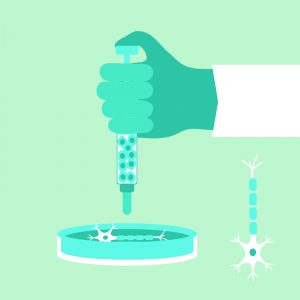 By: Matthew Fischer
By: Matthew Fischer
The regenerative medicine arena consists of a wide range of innovative products. Congress, acknowledging the importance of this field, has established a new program via the 21st Century Cures Act to help spur development and provide for accelerated approval for regenerative medicine products similar to the FDA’s fast track and breakthrough therapy designations. This new approval is the Regenerative Medicine Advanced Therapy (RMAT) Designation.
The RMAT Designation includes all the benefits of the FDA’s other accelerated designations including early agency engagement and priority review; however, unlike the other designations, the RMAT Designation does not require evidence that the product offers substantial improvement over other therapies. For a drug to be eligible for the RMAT Designation, it must meet the following:
- The drug is a regenerated medicine therapy (i.e. defined as a cell therapy, therapeutic tissue engineering product, human cell and tissue product, or any combination product using such therapies or products but not a product regulated solely under Section 361 of the Public Health Service Act and part 1271 of Title 21, Code of Federal Regulations);
- The drug is intended to treat, modify, reverse, or cure a serious or life-threatening disease or condition; and
- Preliminary clinical evidence indicates that the drug has the potential to address unmet medical needs for such disease or condition.
The Code of Federal Regulations sets forth specific guidelines for the designation request process. The office within the FDA tasked with reviewing these requests is the Office of Tissues and Advanced Therapies (OTAT).
In November 2017, the FDA issued draft guidance regarding this expedited program requesting comment from the industry. At the time, the FDA indicated that the agency had received 34 designation requests and acted on 31 of the requests. With this new regulatory framework and specific pathway, the FDA seeks to set the stage for the future with the goal of addressing unmet medical needs with reduced product development time.
